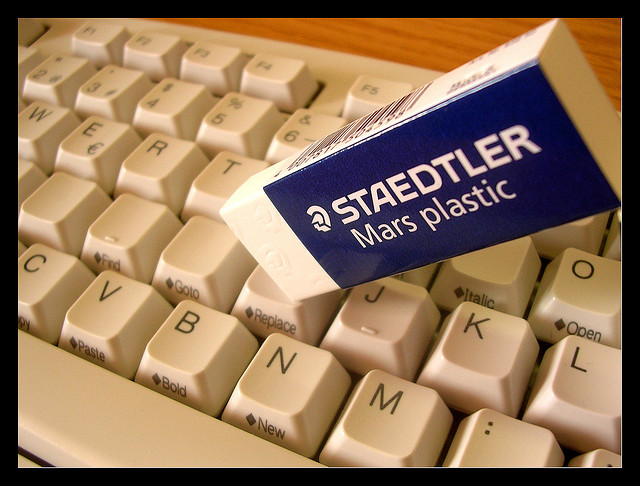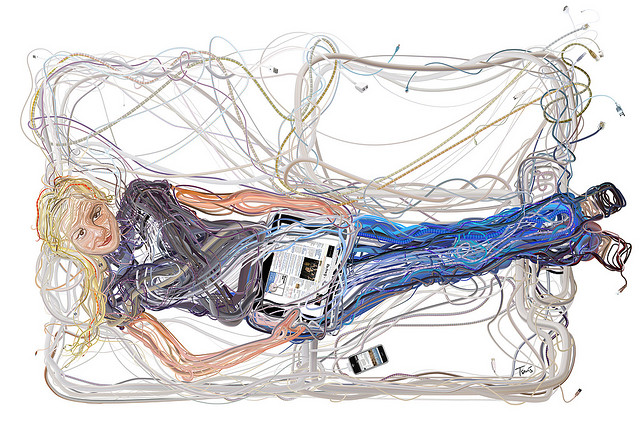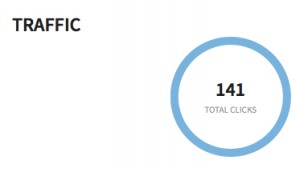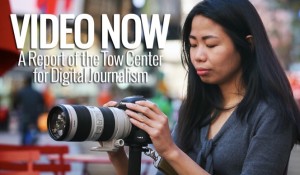Search Results for Tag: social media
Dealing with online errors and corrections

(photo: flickr/Jorge Felipe Gonzalez CC: BY-NC-SA)
Journalists and editors make mistakes no matter how careful they are. It’s standard to publish a printed correction when the error’s in a newspaper article. In the online world though, there’s less consensus on how to handle corrections and clarifications. Some media organizations simply make errors vanish by deleting them and clicking on the ‘update’ button. Others say that this isn’t enough and publishing a correction note is the only ethical option. onMedia’s Kyle James looks at best practices around correcting online errors and mistakes.
![]() read more
read more
10 must-reads on media trends and changes
 It’s difficult for anyone – let alone busy journalists – to keep up with everything happening in the media world. But don’t worry, onMedia’s got it covered. From changing newsroom practices to new ways of analyzing Twitter and presenting stories online, our guest author Gianna Grün brings you this list of thought-provoking reads.
It’s difficult for anyone – let alone busy journalists – to keep up with everything happening in the media world. But don’t worry, onMedia’s got it covered. From changing newsroom practices to new ways of analyzing Twitter and presenting stories online, our guest author Gianna Grün brings you this list of thought-provoking reads.
![]() read more
read more
Innovative journalism and advocacy projects
 The rapid rise of mobile phones, the Internet and above all, social media is making it easy for even small media organizations and advocacy groups to create journalism networks or develop innovative digital projects that have an impact. From documenting the disappearance of trees in the Amazon rainforest to giving a voice to the illiterate in India or connecting journalists covering Colombia’s conflict, onMedia gives you a snapshot of interesting projects from around the world.
The rapid rise of mobile phones, the Internet and above all, social media is making it easy for even small media organizations and advocacy groups to create journalism networks or develop innovative digital projects that have an impact. From documenting the disappearance of trees in the Amazon rainforest to giving a voice to the illiterate in India or connecting journalists covering Colombia’s conflict, onMedia gives you a snapshot of interesting projects from around the world.
![]() read more
read more
Using Medium for online journalism training
![]() Encouraging trainees to use a blog platform such as WordPress, Blogger or Tumblr is a common approach in online journalism training.
Encouraging trainees to use a blog platform such as WordPress, Blogger or Tumblr is a common approach in online journalism training.
The benefits in training workshops are numerous:
– most blog platforms are free to use and useful for training the basics of writing for the web;
– a blog post can replicate a standard online article;
– a blog is an easy to use, creative digital space;
– trainees can experiment with embedding multimedia and even adjusting html code;
– and, particularly for print journalists moving to digital media, the CMS of a blog often functions in a similar way to the CMS of a news media website.
However, if you’ve ever shown trainees examples of scrolling style stories such as the NYT’s Game of Sharks and Minnows or the Guardian’s Firestorm, you’ll often hear the question: how can we produce the scrolling style, especially for long form writing such as magazine style feature stories?
I usually point out the obvious, explaining that blogs do in fact let you scroll down the page. And depending on the level of experience of the participants, I might also suggest storytelling applications that onMedia has tested such as Creatavist.
But more so these days, particularly if I’m training short workshops, I like to introduce trainees to Medium – the blog platform developed by Blogger and Twitter founder Evan Williams.
![]() read more
read more
Journalists – find out how popular your work is
 You’re a journalist, and you’ve just posted your latest article, video or radio piece on Facebook, Google+ or Twitter. But how can you track who’s sharing it and how many people you really reach on social media? Whether you just want to learn more about social media analytics tools or start increasing your impact on social media, onMedia will help you get started with the following list.
You’re a journalist, and you’ve just posted your latest article, video or radio piece on Facebook, Google+ or Twitter. But how can you track who’s sharing it and how many people you really reach on social media? Whether you just want to learn more about social media analytics tools or start increasing your impact on social media, onMedia will help you get started with the following list.
![]() read more
read more
Tow Center study focuses on video journalism
 Online news video continues to rapidly grow, but how are newsrooms producing video? What formats are working? How important is mobile and social media? And what is the return on investment in allocating staff and resources to produce video journalism?
Online news video continues to rapidly grow, but how are newsrooms producing video? What formats are working? How important is mobile and social media? And what is the return on investment in allocating staff and resources to produce video journalism?
A new report, Video Now: The Form, Cost, and Effect of Video Journalism, produced by Professor Duy Linh Tu, of Columbia University’s Tow Center for Digital Journalism, has examined the video production of several American newspapers and online media organisatons.
It’s well worth watching the whole report.
The responses from producers and editors are both candid and insightful, especially regarding time and staff required to produce video and the number of views their pieces attract.
![]() read more
read more
Connecting journalists with hostwriter
 You’re planning your next overseas assignment. You’re looking for strong story ideas, good contacts with expert local knowledge, and maybe a couch or bed in the spare room of a journalist-friendly house to keep travel costs down. If this sound familiar, then the soon to be launched international journalism network called hostwriter might be an answer.
You’re planning your next overseas assignment. You’re looking for strong story ideas, good contacts with expert local knowledge, and maybe a couch or bed in the spare room of a journalist-friendly house to keep travel costs down. If this sound familiar, then the soon to be launched international journalism network called hostwriter might be an answer.
Hostwriter is the brainchild of German journalists Tabea Grzeszyk, Tamara Anthony, Sandra Zistl. The pitch is simple: find a story, find a colleague, find a couch.
The aim of hostwriter is to create a network of professional journalists around the world who can help each other, share information and contacts, collaborate to produce stories together, or even let a colleague stay in their home.
![]() read more
read more
How ARD, BBC and CNN verify social media content
 Be it the death of Osama bin Laden, the emergency landing of a plane on the Hudson River or armed conflict in Syria, photos and videos made by eye witnesses usually reach the public as initial evidence through breaking news. Today, media organizations are virtually flooded with digital content from all over the world which makes it even more important to pay attention to the sources of information. That is why large media organizations have set up special research teams to verify the content from social networks. Although most of them follow the same rules, it is worthwhile to compare the separate approaches. Konrad Weber shows how renowned international media outlets such as ARD, BBC, CNN and others check the content coming from social media.
Be it the death of Osama bin Laden, the emergency landing of a plane on the Hudson River or armed conflict in Syria, photos and videos made by eye witnesses usually reach the public as initial evidence through breaking news. Today, media organizations are virtually flooded with digital content from all over the world which makes it even more important to pay attention to the sources of information. That is why large media organizations have set up special research teams to verify the content from social networks. Although most of them follow the same rules, it is worthwhile to compare the separate approaches. Konrad Weber shows how renowned international media outlets such as ARD, BBC, CNN and others check the content coming from social media.
![]() read more
read more




Feedback